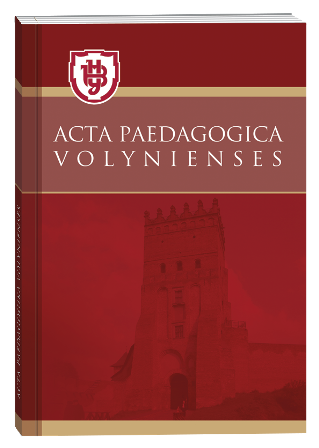USAGE OF VIDEOS FOR TEACHING OF FUTURE DOCTORS IN MEDICAL AND BIOLOGICAL PHYSICS AS A DEMAND OF THE PRESENT TIME
DOI:
https://doi.org/10.32782/apv/2021.3.33Keywords:
educational videos, medical and biological physics, distance learningAbstract
The article considers the theoretical and methodological principles of using educational videos in the process of teaching medical and biological physics to students of medical and pharmaceutical specialties based on the example of Ivano-Frankivsk National Medical University. The aim of the paper is to prove the expediency and didactic efficiency of the use of educational videos in the conditions of distance learning in the quarantine and post-quarantine period. The scientific novelty of the paper is due to the analysis and addition of current practical recommendations for the development of educational videos with highly specialized content. The methodology of research includes analysis of scientific literature and quantitative analysis of empirical and statistical material. The paper presents a recommended list of software for independent creation of educational videos, approved on the basis of the author’s pedagogical experience. Based on statistical data of the frequency of viewing author’s works – video instructions for conducting practical classes in the course of medical and biological physics – the thematic and temporal features of the practical application of the videos as a teaching tool were empirically determined. Based on the analyzed data, conclusions are made about the didactic potential of educational videos and about the achievement due to its use of the effects of demonstrativeness, fragmentation, methodological invariance, conciseness, heuristics and independence. The obvious demand for the educational video product among students in Ukraine and abroad has been confirmed. Quantitative analysis of the statistics of views of the presented content shows a direct interdependence on the study of particular topics according to the calendarthematic planning and on the schedules of the thematic final modular control of knowledge. At the same time, the identified examples of unscheduled views during the peak periods of the pandemic allow us to assert the extracurricular popular science effect of such products and the prospects for its further development.
References
Бершадська, О., Зубань, Ю., Іларіонов, О., та ін. Рекомендації щодо впровадження змішаного навчання у закладах фахової передвищої та вищої освіти. Міністерство освіти і науки України (2020). сайт URL: https://mon.gov.ua/ua/osvita/visha-osvita/rekomendacij-shodo-vprovadzhennya-zmishanogo-navchannya-u-zakladahfahovoyi-peredvishoyi-ta-vishoyi-osviti сторінка 51, (дата звернення: 11.08.2021).
Бучинська Д. Л. Використання відео в навчальному процесі – потреба сьогодення. Відкрите освітнє е-середовище сучасного університету. 2015. Вип. 1. С. 1–7. URL: http://nbuv.gov.ua/UJRN/oeeemu_2015_1_12 (дата звернення: 11.08.2021).
Вембер, В. П., Бучинська, Д. Л. Сучасні типи навчального відео та особливості їх використання у навчальному процесі. Освітологічний дискурс. 2016. № 1 (13). С. 19–29. https://doi.org/10.28925/2312-5829.2016.1.1929
Краснова Г.А., Савченко П.А., Савченко Н.А. Общие подходы к созданию рационального интерфейса обучающих программ. Открытое образование. 2001. № 6. С. 9–11.
Синтія Брейм. Ефективне навчальне відео. URL: https://ceit.ucu.edu.ua/news/efektyvne-navchalne-video/
Brame, C. J. (2015). Effective educational videos. Retrieved [11.08.2021] from http://cft.vanderbilt.edu/guidessub-pages/effective-educational-videos/
Dale E. Audio-visual methods in teaching. New York: Dryden, 1969. – 719 p.
Guo P. J, Kim J., and Robin R. How video production affects student engagement: An empirical study of MOOC videos. ACM Conference on Learning at Scale. 2014. URL: http://groups.csail.mit.edu/uid/other-pubs/las2014-pguoengagement.pdf
Hernandez-Ramos, P. Aim, shoot, ready! Future teachers learn to ‘do’ video. British Journal of Educational Technology. 2007. № 38(1). P. 33–41.
Mayer R. E. Applying the science of learning: Evidence-based principles for the design of multimedia instruction. Cognition and Instruction. 2008. № 19. P. 177–213.







